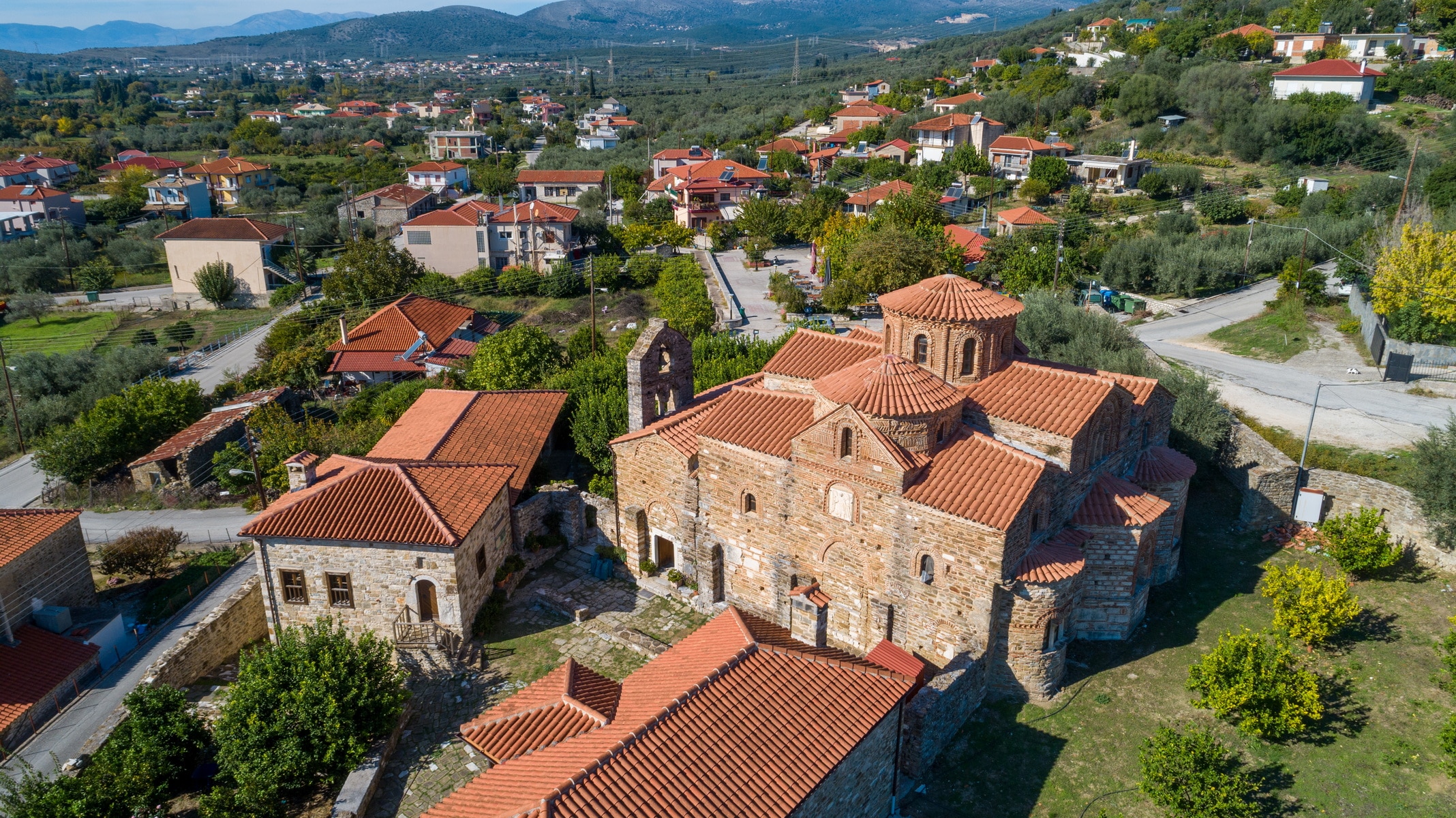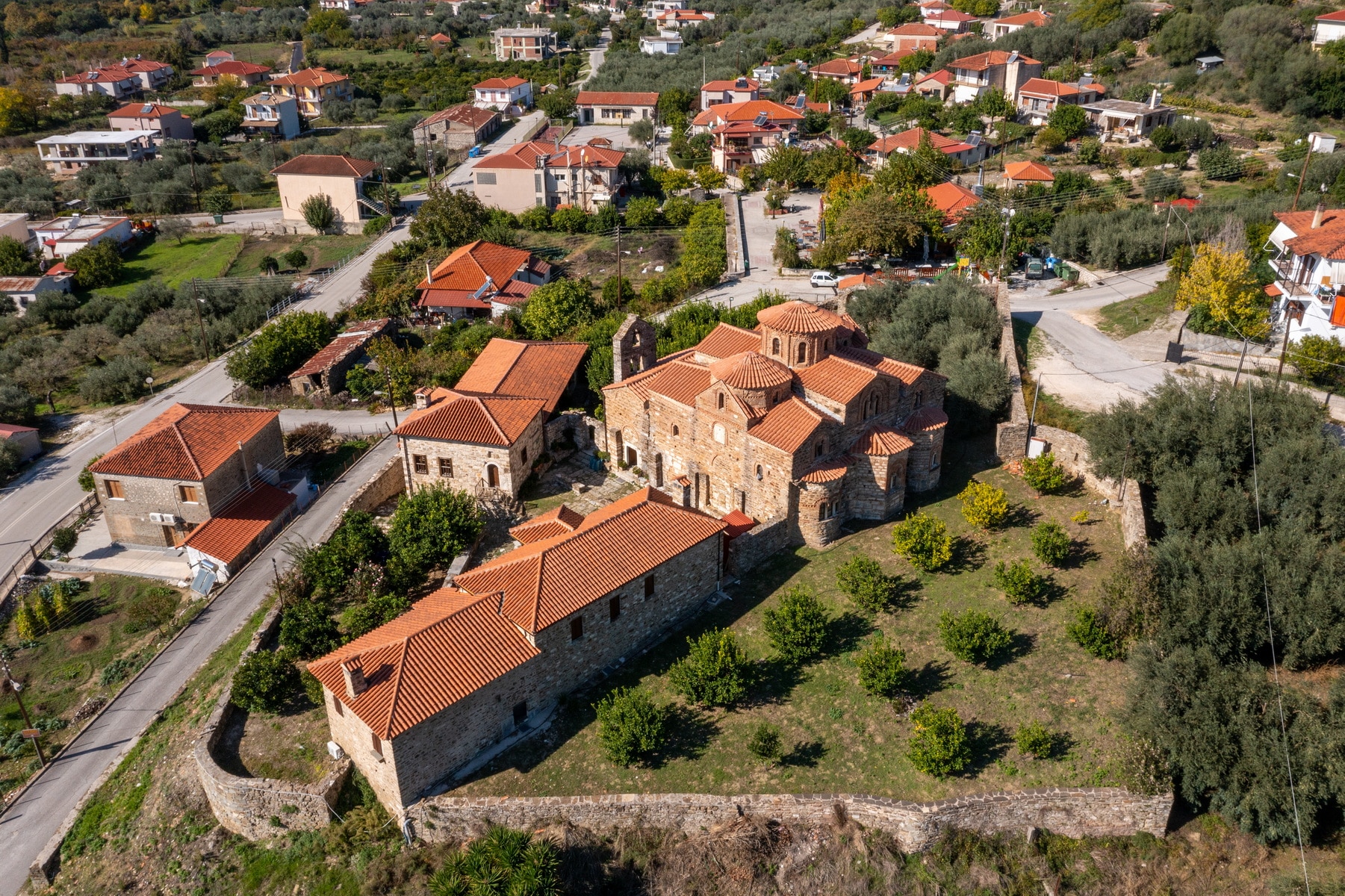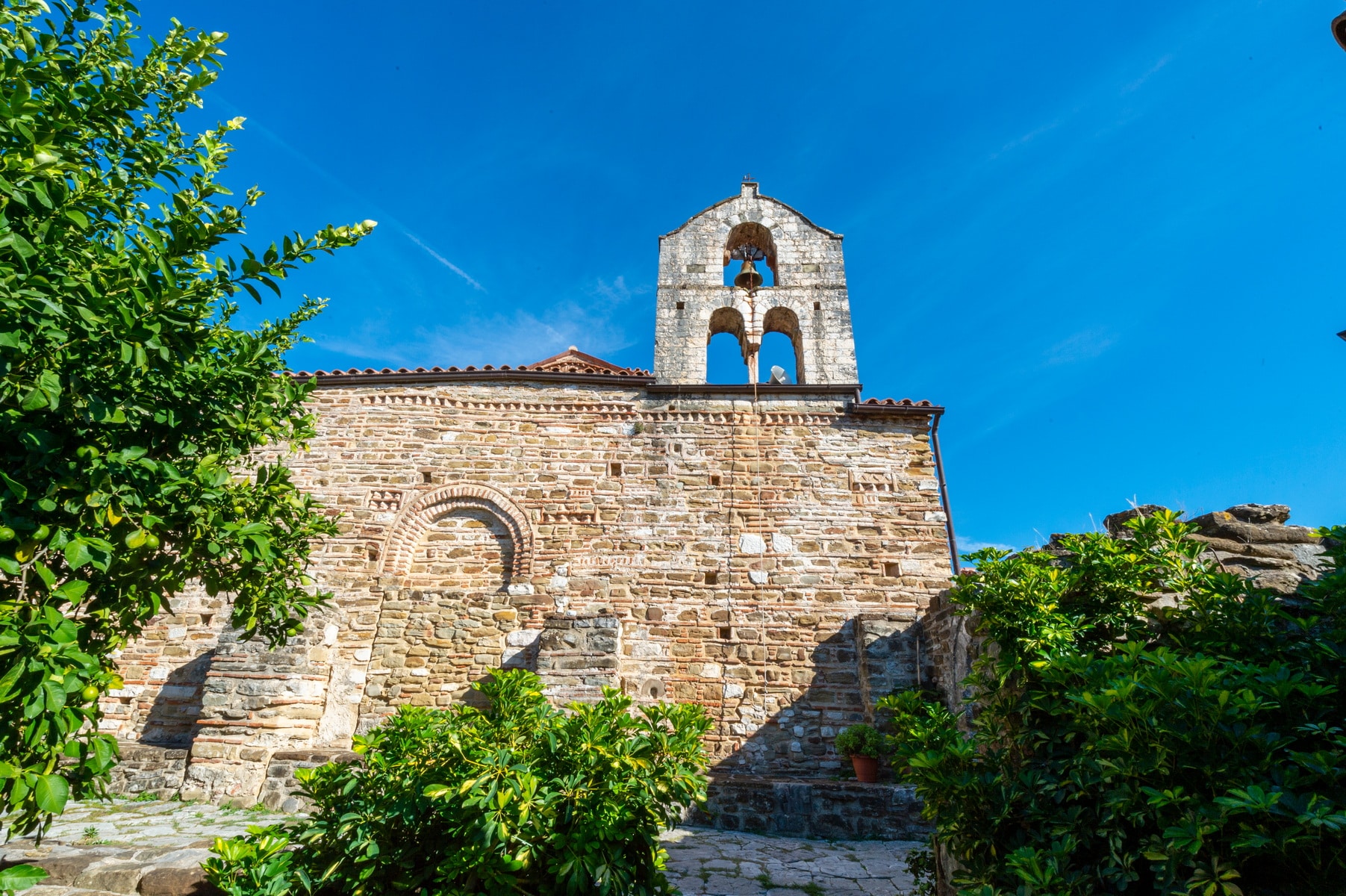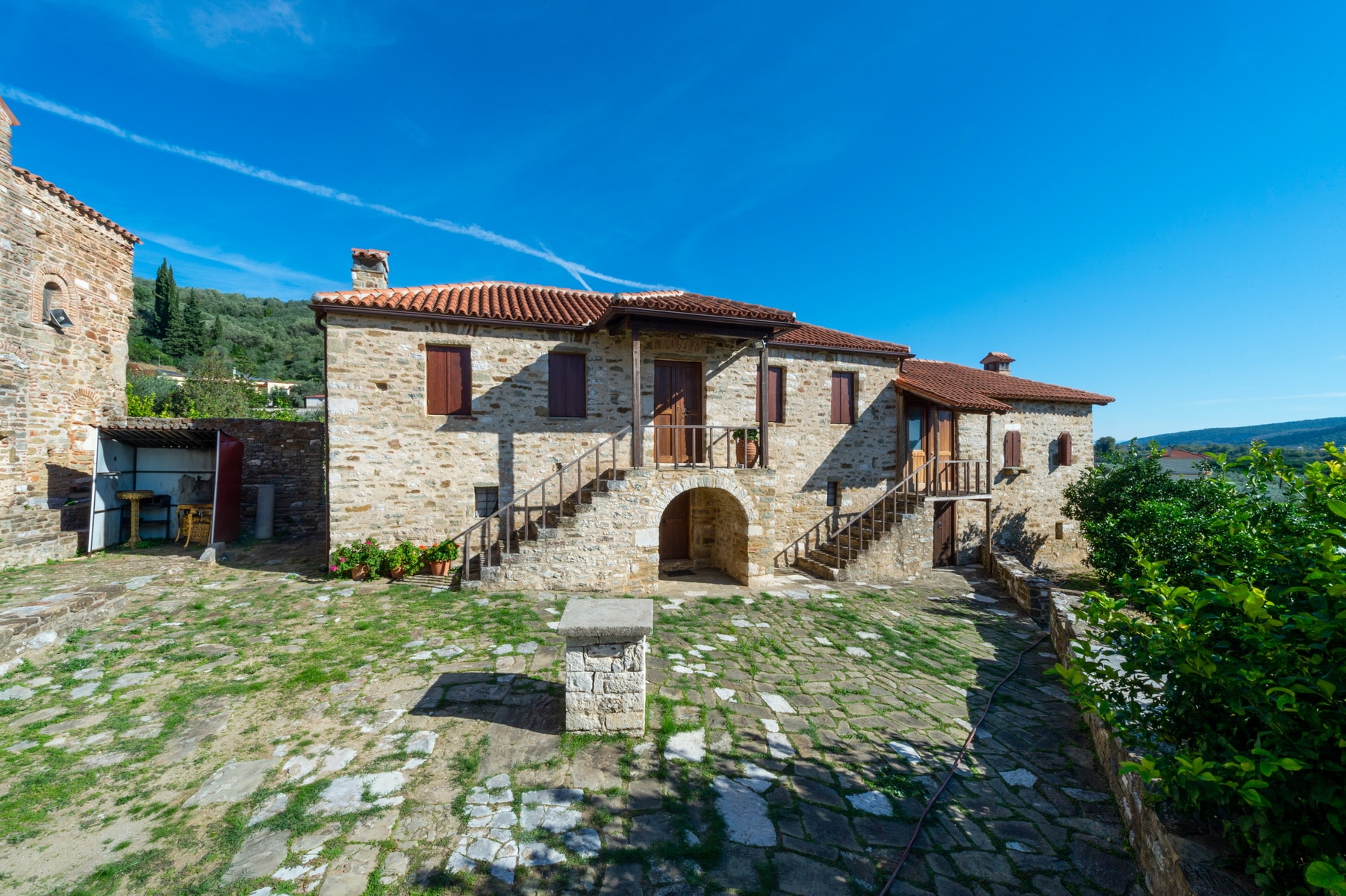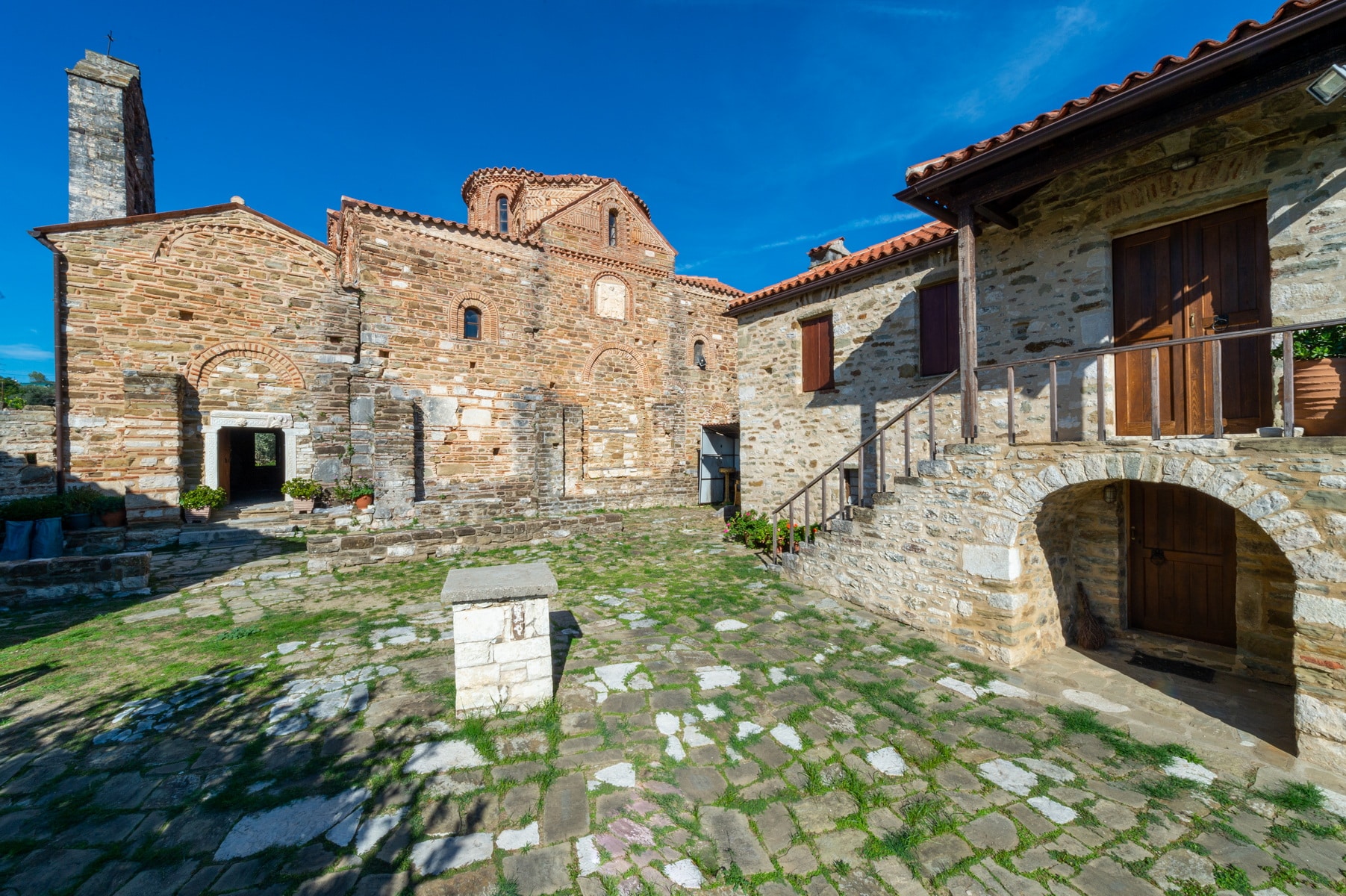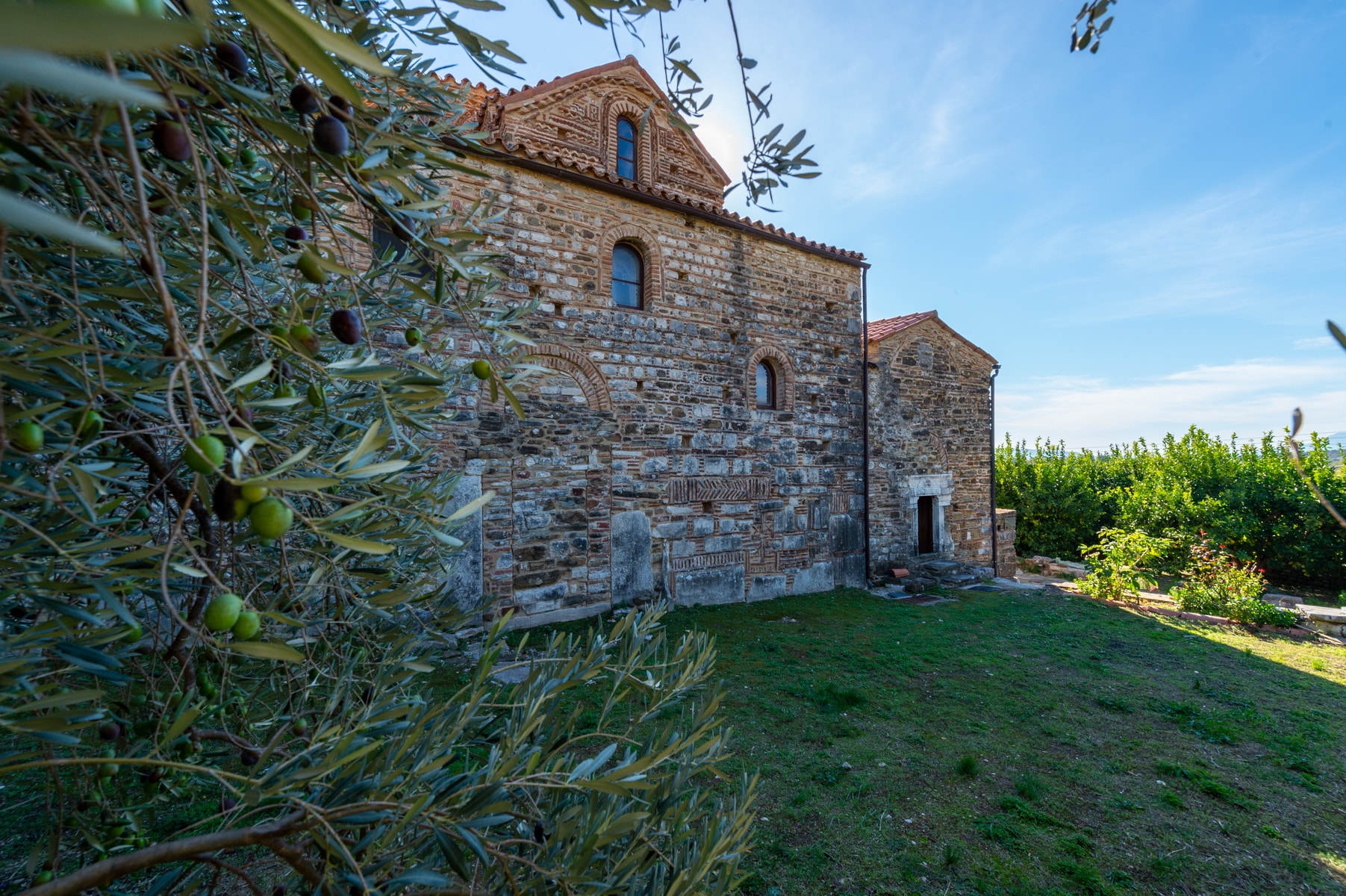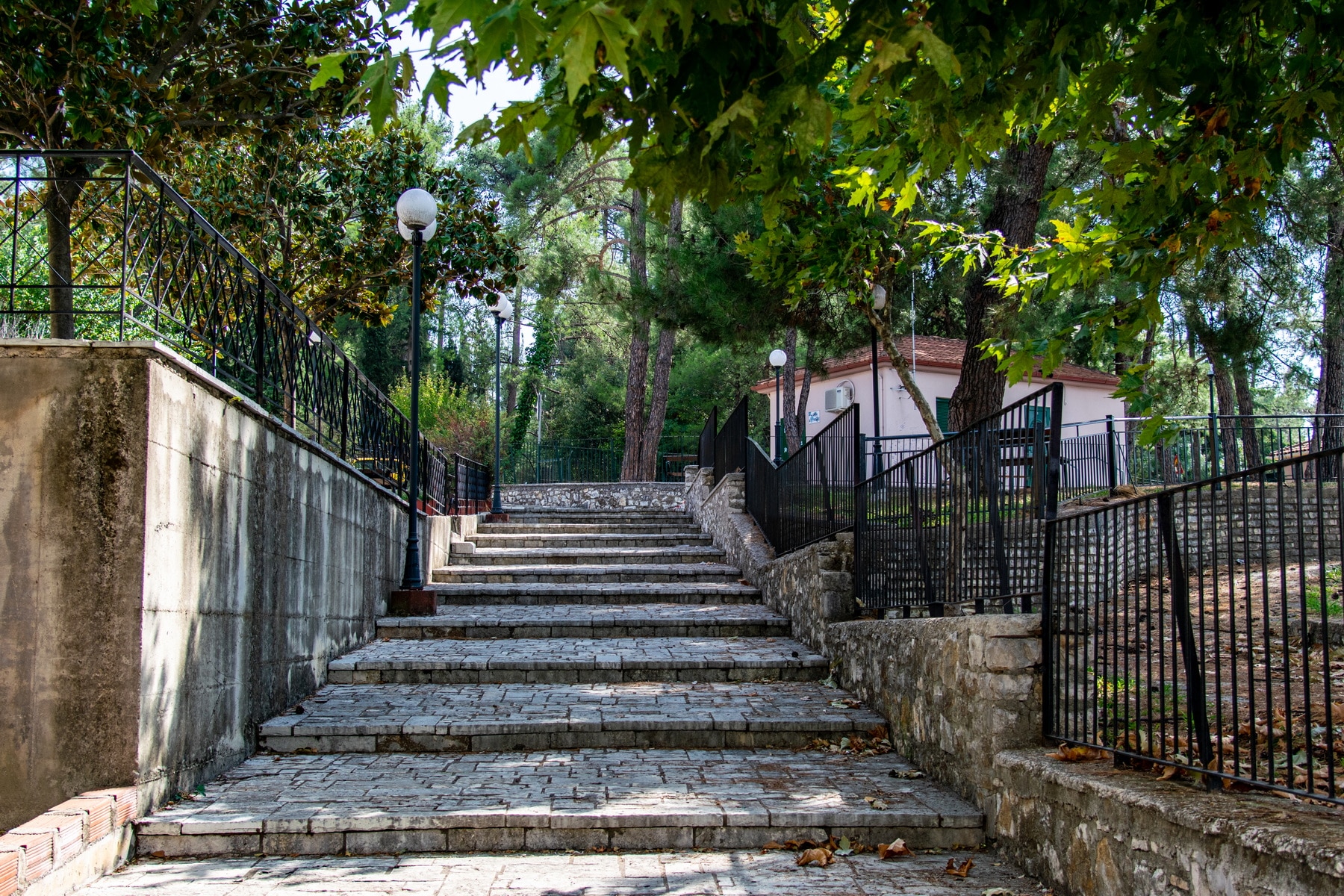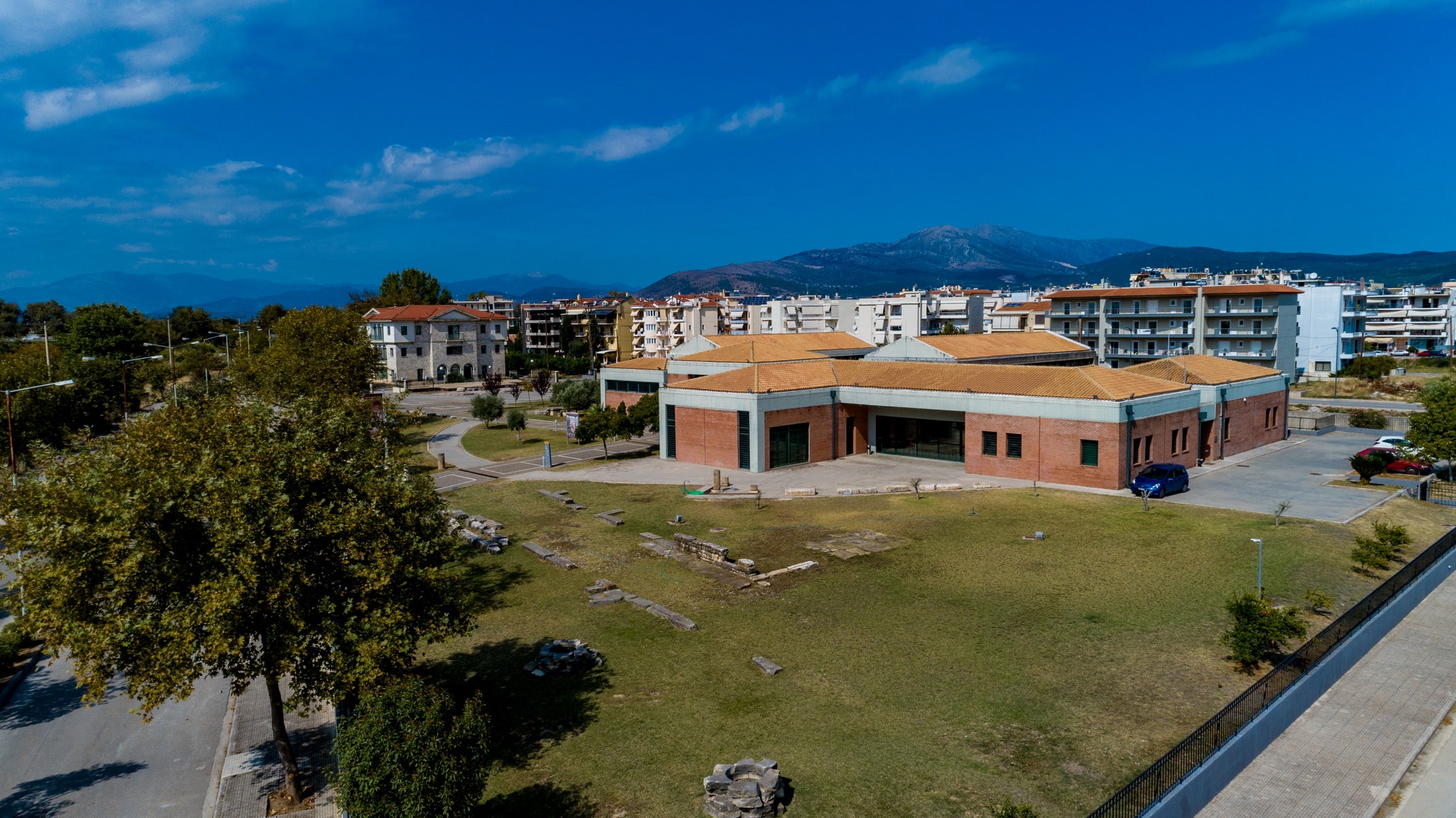Virgin Mary of Vlacherna church, whose name is associated with the well-known Virgin Mary of Vlacherna temple in Istanbul, is located in the homonymous village, about 1 km northeast of Arta, on the other bank of river Arachthos. It is classified as one of the important monuments located around Byzantine Arta, such as Kato Panagia, Panagia of Koronisia, Pantanassa near Filippiada, the church of Panagia Brionis in Neochoraki, etc.
It is a three-aisled vaulted basilica with rich sculptural and painted decoration. Vlacherna was the katholikon (central church building) of the famous monastery and burial temple of many members of the Komnenodoukades, rulers of the Despotate of Epirus. The inscriptions preserved on two graves on the south and north wall of the main church reveal that the first belonged to the despot Michael II Komnenos Doukas, the illegitimate son of Michael I Angelos, founder of the Despotate. The second belonged to the sons of Theodora Komninodoukaina (Saint Theodora), who had a violent death.
The initially men’s monastery became a women’s monastery, as attested by a synodal letter of the Metropolitan of Nafpaktos, Ioannis Apokafkos (1224-1230), the first written reference to Vlacherna.
Architecture – dating: The katholikon was built on the site of an older church dating to the late 9th to early 10th century. The initial church was probably a three-aisled basilica with a three-part sanctuary and a wooden roof, parts of which are the south wall (the difference can be seen in the masonry) and the south arch. Virgin Mary Vlacherna church, a three-aisled basilica with an arched aisle, was probably founded at the beginning of the 13th century (between 1224 and 1230). In the middle of the same century, it is estimated that the vaulted basilica was altered into a domed one with the construction of three domes, one central and two smaller at the sides. At the same time, a curved dome was added to the northern aisle. The arches that house the aisles are covered externally by double roofs that form pediments.
The entrance to the original temple was made by five door openings, one on the north and south side and three on the west. Today the main gate on the west side remains open, while the side openings have been turned into windows.
The church’s narthex whose floor has a great difference in height from the main church has a later date (around the end of the 13th century). The oldest floor of the katholikon is decorated with marble slabs in colorful marble frames. In the center of the middle aisle, five interlocking circles, decorated with mosaic decoration, give the symbolic depiction of the five loaves. The central circle is decorated with a mosaic representation of a double-headed eagle.
Sculptural decoration: The temple is decorated externally on the east side and pediments with brick decorative themes. There are architectural reliefs inside the church, mostly capitals of reused columns that originate from early Christian or ancient buildings. The sculptural decoration includes a marble slab that closes today the window on the south side and depicts a relief form of the archangel Michael.
Several sections of the marble iconostasis are preserved, many of which are walled into the temple’s entrances. A reconstruction attempt of the iconostasis lies at the sculpture room in the dining room of Parigoritissa. The Vlacherna iconostasis is considered one of the masterpieces of Late Byzantine sculpture for its excellent carving and the abundance of decorative themes.
Frescoes: The painted decoration of the monastery’s katholikon was revealed during the removal of newer plaster in 1975-1977. The evident stylistic differences have led to the identification of two phases consistent with the temple’s construction interventions.
The frescoes of the main church belong to the first phase and date back to the middle of the 13th century. Some of the representations are The Visitation of Mary to Elizabeth, The holy Myrrh-bearers, Scenes from the Passion of Christ, and The Incredulity of Saint Thomas .
The frescoes of the narthex belong to the second phase. The most important representations are the Second Coming, the Troparion of Christmas, and the litany of the image of the Hodegetria.
Although the iconographic program has not been brought to light entirely, it is enough to reveal the monumental style and art of high artistic demands. The use of the semi-precious stone, lazurite (lapis lazuli), to give the blue color to the tents’ background and the figures’ clothes is indicative. The quality and craftsmanship of Vlacherna murals’ art equal the artistic expression of Constantinople and Thessaloniki.
Dedication of the temple: The temple used to be dedicated to the Assumption of the Virgin until 1814. Today, the temple, parish church of Vlacherna village, is dedicated to the Laying of Our Lady’s Holy Robe and celebrated on the 2nd of July.

Church of Panaghia of “Vlacherna”




